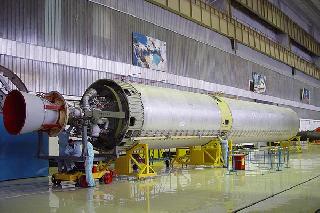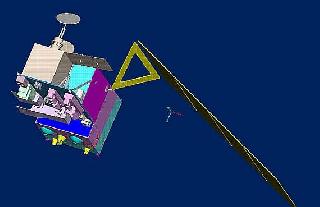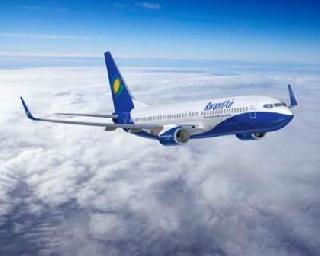
Angara Launch Vehicle. Photo: Khrunichev Space Center.
Russia's space programme is escalating new heights with top priorities like the new Angara rocket family on the cards. Russia plans to start testing the new booster rocket, the Angara in 2013. The rocket assembly would be completed in the first quarter of 2011.
According to Vladimir Nesterov, head of the Khrunichev State Research and Production Space Center, the first-stage engine was 99% ready and the second stage engine had already been tested three times.
The Angara rocket family is a family of space-launch vehicles currently under development by the Moscow-based Khrunichev State Research and Production Space Center.
The main purpose of the Angara rocket family is to secure Russia’s independent access to space. Angara will reduce Russia's dependency on the Baikonur Cosmodrome, located in the independent republic of Kazakhstan. The Angara line of vehicles is equivalent of the Evolved Expendable Launch Vehicle (EELV) families, based on a common Universal Rocket Module (URM). Depending on configuration, the first stage consists of 1, 3, 5 or 7 such modules. Unlike EELV launchers, Angara will not employ solid rocket boosters (SRB).
Angara uses a building-block approach using common components to be able to launch various payload weights. The first stage uses common components called Universal rocket modules (URM-1). The first stage can use either 1 module, 3 modules or 5 modules. The First stage modules are powered by the RD-191 Rocket Engine.
Angara rockets are intended to replace several existing launch vehicles. The light Angara 1.1 and 1.2 versions will replace the Kosmos-3M, Tsyklon and Rocket launchers; Angara 3 will replace the Zenit (which was built by a Ukrainian company) and Angara 5 will replace the heavy-lift Proton (which had launch pads only on Kazakh territory).
The Angara 1.1 will use a single Angara booster stage core with the Breeze M upper core stage to deliver small-class payloads to low-earth orbit. To enhance performance to low-earth orbit, the Angara 1.2 substitutes a second stage booster powered by the liquid oxygen/kerosene RD- 0124A engine, developed for the Soyuz 2 (Soyuz ST) derivative, that is also included on the Angara 3 and 5 versions. The Angara 3 and Angara 5 adds a General Cryogenic Upper Stage (GCUS) third stage using a single KVD-1 liquid oxygen/liquid hydrogen engine, developed for the GSLV, to loft medium and intermediate payloads.
These new-generation rockets will provide lifting capabilities between 2,000 and 40,500 kg into low earth orbit, and are therefore, intended to become the mainstay of the Russian unmanned launcher fleet in the future and replace several existing systems.
Khrunichev is also developing a super-heavy-lift version (Angara 7), which is capable of orbiting payload of between 45 and 75 tons, and for which there is no equivalent in Russia's current rocket fleet.
 Previous Article
Previous Article Next Article
Next Article












The Indian Air Force, in its flight trials evaluation report submitted before the Defence Ministry l..
view articleAn insight into the Medium Multi-Role Combat Aircraft competition...
view articleSky enthusiasts can now spot the International Space Station (ISS) commanded by Indian-American astr..
view article